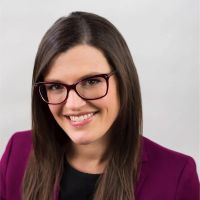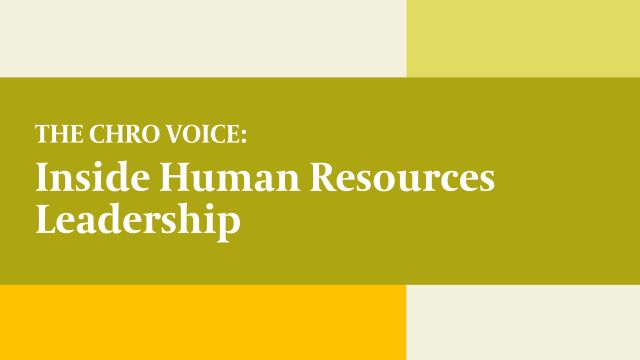There is no status quo when it comes to talent if you want a progressive, high-performing organization – it’s always and forever the top priority.
 Heather RayChief Transformation & People Officer of Mark Anothy Group
Heather RayChief Transformation & People Officer of Mark Anothy Group
The role of the Chief Human Resources Officer (CHRO) and Chief People Officer (CPO) has expanded far beyond traditional HR boundaries. In some organizations, it’s evolving into a dual role, such as at Mark Anthony Group, where Chief Transformation & People Officer Heather Ray not only leads the people function but also spearheads enterprise-wide transformation, shapes strategy, and drives organizational agility. In this candid conversation, she shares her approach to building a high-impact HR function, leading transformation with speed, and preparing leaders for a future shaped by AI and organizational agility.
Given the natural overlap between HR and leading change, how do you bring together your dual roles to help people—and the business—thrive?
Given the natural overlap between HR and leading change, how do you bring together your dual roles to help people—and the business—thrive?
Building an extraordinary team around me has been game changing. I realized early on that to maximize my impact—and our team’s impact—on the organization that I needed to get the right people and structure in place. Today, I have an incredible team of transformation, HR, and communication professionals that challenge the status quo, pilot new programs, and share the same passion for delivering business success as our executives.
This foundation allows me to focus on long-term strategy with the executive team, staying ahead of external developments and preparing the organization for what’s next. Every day is different, and my HR and transformation hats are interchangeable because change leadership principles guide both functions.
From a functional HR perspective, we are disciplined about fundamentals, including coaching, development, recognition, reward, and growth opportunities. It’s not flashy, but it works. We avoid chasing trends and instead focus on what’s relevant and impactful for our business.
Talent remains at the heart of our strategy. We maintain a high bar, move fast, and continuously refine our approach. There’s no room for complacency—we’re always evaluating, developing, and investing in our people. Balancing external hires, internal promotions, and entry-level pipelines creates a dynamic environment where everyone is learning and growing.
How do you drive meaningful, organization-wide change as the lines between people, technology, and business strategy continue to blur?
How do you drive meaningful, organization-wide change as the lines between people, technology, and business strategy continue to blur?
Leading change requires knowing how to get things done quickly and effectively across the organization. I understand how different parts of the business connect and where interdependencies lie, which helps me align structural and human implications of change.
Take AI, for example. It was initially falling through the cracks—no clear ownership, no momentum. I stepped in to align teams, identify top use cases, launch pilots, and create executive alignment. AI is a great example of how HR can lead business-critical initiatives in partnership with technology and digital leaders.
Looking ahead, I’m excited about how AI will reshape work and require thoughtful organizational design for success in the future. The convergence of IT, business, and people functions will demand speed, agility, and a people-centric approach. Leadership will be key to keeping teams focused and in sync through change that is happening at an ever rapid rate.
How does Mark Anthony Group define transformation, and how do you operationalize it?
How does Mark Anthony Group define transformation, and how do you operationalize it?
We define transformation as “significant, strategic change that impacts multiple functions or business units and needs to be accomplished on an accelerated basis.” To support this, we established a Transformation Office under my leadership, tightly integrated with HR and Corporate Communications.
This setup is especially important because studies show more than 70% of all transformations fail or underdeliver on their expectations—most often because the human journey of change is more challenging or is overlooked. We ensure that every transformation initiative considers the human journey—communication, training, performance, reward, and recognition. We clarify success metrics, accountability, and critical paths, and work side-by-side with teams to overcome roadblocks.
Nearly two years in, we’ve led acquisition integrations, launched new operating models, enabled systems, and driven digital and AI transformation. Our business leaders consistently recognize the transformation team’s role in accelerating outcomes and making it easier to move things forward together.
What skills do you believe are most critical for future HR leaders?
What skills do you believe are most critical for future HR leaders?
Trust and influence are non-negotiable. Understanding what motivates stakeholders and aligning with their goals leads to better outcomes. I want leaders to feel I’m fully invested in their success and the business’s success. Courage is also key, especially in identifying and addressing organizational tensions that slow us down. Time waste really frustrates me, and I’m passionate about finding faster, more aligned ways of working.
Curiosity and business acumen are vital. I see myself as a business leader first, through the lens of people. We approach HR like a business, ensuring every initiative drives meaningful impact. We challenge ourselves to ask, “So what?” and “What’s the business outcome?” to stay relevant and avoid the HR echo chamber.
Finally, the importance of communication and inspirational leadership are sometimes underestimated but they are critical. In a digital world, consistency in messaging is everything. People need to hear things multiple times to retain them. It’s not about policies; it’s about creating a mindset, inspiring people, and keeping them at the heart of our business, actively showing them that we will remain grounded in our philosophy that our People Drive Growth.
What advice would you give HR leaders as they shape their approaches to talent and culture?
What advice would you give HR leaders as they shape their approaches to talent and culture?
Be relentlessly relevant. What worked for a 50,000-person organization won’t necessarily work for a 2,500-person entrepreneurial company like ours. During a period of rapid growth, we hired hundreds of leaders. Many wanted to replicate programs from previous companies, but we had to critically evaluate what was right for us. Staying true to our entrepreneurial culture helped simplify and clarify our people agenda.
Focus is equally important. Your team’s time is your most valuable resource. Direct it toward high-impact activities that support business strategy. Sometimes that means challenging the status quo or saying no. But if you’re driving real value, that’s what your business partners want—and need.
Lastly, remember that shaping talent and culture is not just about structure or technology but about sparking real transformation within your organization. True progress comes from building momentum and engagement that people genuinely want to be part of. That’s how you achieve lasting results.







